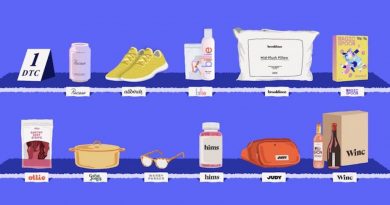The impact of travel retail’s lost year on beauty
This story is part of Endgames, a Digiday Media editorial package focused on what’s next, what’s coming, and what’s being phased out in the industries we cover. Access the rest of our Endgames coverage here; to read Digiday’s Endgames coverage, click here; Modern Retail’s coverage is available here.
With international travel nearly at a standstill, travel retail has been a grim sector for beauty brands.
For the first nine months of the 2020 fiscal year, Shiseido’s travel retail business decreased by 19.3%, a drop of $173 million year over year. Coty pinned the “vast majority” of its 35.3% decline in APAC revenue on “continued significant pressure” in travel retail in its most recent quarterly earnings.
The duty-free retailers’ earnings paint a similar picture. For the first nine months of 2020, duty-free retailer Dufry had a 67.8% decrease in sales. LVMH stated that its DFS [Duty Free Shoppers] company “saw a significant decline in its activity in most destinations” in its most recent quarterly report.
All in all, the travel retail channel’s share of total global beauty sales has been cut in half, from 8% in 2019 to 4% in 2020, according to McKinsey.
“It’s probably one of the few areas in the beauty and personal care space where what we’re seeing is true disruption rather than an acceleration or amplification of a trend already present in the market,” said Emily Gerstell, an associate partner at McKinsey.
But even if the shock came on suddenly, brands may have to wait a while before things get back to normal in certain markets. “When you look at both Europe and North America, there’s a sense of a protracted recovery,” said Gerstell. “It’s more likely to be a 2023, 2024 return in travel demand.”
In the meantime, many brands have responded by scaling back travel retail promotions and zeroing in on China’s domestic duty-free program, where increased tax-free shopping limits at stores open to domestic travelers are now serving as a life preserver.
After years of creating increasingly elaborate travel retail promotions, including exclusive products and in-store events, brands have cut back on their investments this year.
“In the past, travel retail had been about exclusive kits and destination-oriented or destination-themed exclusives. It became more back to basics,” said Ashley Arbuckle, the vp of brand marketing and wholesale at L’Occitane. The brand saw “almost no business” in travel retail during late spring and early summer, as its stores remained closed or at limited capacity. It pivoted its marketing to a “healthy hands” campaign, promoting its soap, hand sanitizer and hand care products. It also added buy-online, pick-up in-store to all of its airport stores.
Amorepacific’s brand portfolio also shrunk its number of travel retail-exclusive products for the year, to 200, a “slight decrease” from 2019, according to David Park, the svp for Amorepacific Global Travel Retail. “We strategically focused on providing bestsellers, rather than new products, to match customer demand,” he said. “Many physical duty-free shops had to remain closed this year, but we were able to connect with consumers through new platforms like live commerce.”
But there’s one place where brands are still making big investments in travel retail: China. As life has returned to normal in China this year, domestic travel has made a significant rebound. With international travel still severely limited, the Chinese government expanded its domestic duty-free program in the tropical vacation destination Hainan. In July, the annual tax-free spending limit for Hainan was raised from 30,000 yuan (about $4,592) to 100,000 yuan ($15,307). Meanwhile, downtown duty-free department stores such as Zhongchufu in Beijing extended shopping eligibility to anyone who had traveled abroad since August 2019.
Open to domestic tourists, the Haitang Bay Duty Free Shopping Complex located in Hainan vacation spot Sanya has become the de facto global duty-free capital.
Estée Lauder Companies CEO Fabrizio Freda noted in the company’s most recent earnings call that a “prospering” Hainan and increase in the duty-free shopping allowance “partially offset the decline of travel retail in the fourth quarter.” Sales of skin-care products by both Estée Lauder and La Mer saw “double-digit growth” in travel retail, with mainland China cited as a driving force for both.
As a result, brands and retailers are rushing to open travel retail stores in China, offer China-specific travel retail promotions and partner with Chinese companies. Amorepacific, for example, launched a strategic partnership with China Duty Free Group in October. Dufry announced a joint venture with Alibaba during the same month. In September, tax-free shopping provider Global Blue announced a strategic partnership with Alipay parent company Ant Group.
“Domestic travel retail opportunities meant businesses like Lagardère Travel Retail could open eight fashion and beauty boutiques in airports including Shanghai Hongqiao and Shenzhen,” said Iris Chan, a partner for international client development at Digital Luxury Group.
“There have been many beauty brands doing events and promotions and travel retail campaigns in Sanya, as of late,” said Chan. She called out a successful campaign created by NARS, which launched a promotion with China Duty Free in Sanya. It included an AR experience, gaming with virtual try-on, on-site artistry tips and a gift with purchase. Thanks to the campaign, the brand outperformed its sales target by 26%.
For the road to recovery in 2021, the industry will continue to look to the Asia-Pacific region, and especially China. Chinese consumers make up around 60% of global travel retail spending, according to McKinsey.
“In 2021, our sales strategy will track the recovery trend of domestic and overseas [travelers],” said Park, who noted that the company’s Sulwhasoo brand is planning on providing more Hainan-exclusive products next year. “ASEAN countries are also preparing to open borders and are creating ‘travel bubbles’ within the region, so we are planning new promotions and launches there, as well.”

